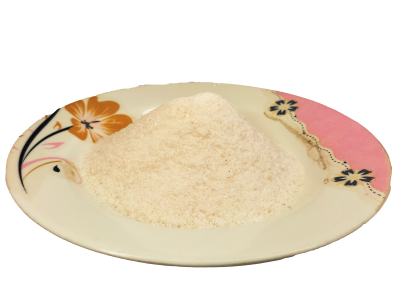Pink edible salt, often associated with its Himalayan origin, has become a global phenomenon for its striking color, claimed health benefits, and versatile culinary applications. Renowned for its purity and mineral content, pink salt has transcended its traditional use, finding applications in wellness, skincare, and home décor. This article delves into the origins, benefits, uses, trade dynamics, and myths surrounding pink edible salt.
Algohar World natural salt lamps that are believed to provide various benefits, combining both the aesthetic appeal and the potential health advantages associated with Himalayan salt lamps.
What is Pink Edible Salt?
Definition and Composition
Pink edible salt is a type of rock salt known for its characteristic pink hue, which is attributed to trace minerals like iron, magnesium, and potassium. The salt is primarily composed of sodium chloride but contains up to 84 trace minerals that differentiate it from regular table salt.
Origins of Pink Salt
The majority of pink salt is mined from the Khewra Salt Mine in Pakistan, located at the foothills of the Himalayas. This mine, one of the oldest and largest salt mines in the world, produces salt that is believed to have formed over 250 million years ago from the evaporation of ancient seas.
The Unique Color of Pink Salt
Natural Mineral Content
The pink color is a result of iron oxide and other trace minerals present in the salt. These elements not only give the salt its aesthetic appeal but also contribute to its distinctive flavor profile.
Shades of Pink
Pink salt can vary in color, ranging from pale pink to deep reddish-pink, depending on the mineral composition and the specific mining location.
Types of Pink Edible Salt
Fine Pink Salt
This type of pink salt is finely ground and is commonly used as a substitute for regular table salt in cooking and seasoning.
Coarse Pink Salt
Coarse pink salt consists of larger crystals and is often used in grinders or for decorative purposes in cooking.
Gourmet Salt Slabs
These slabs are cut from large salt blocks and are used for cooking, serving, or curing food.
Nutritional Profile of Pink Salt
Sodium Content
Like regular table salt, pink salt is primarily composed of sodium chloride, which is essential for maintaining the body’s fluid balance and nerve function.
Trace Minerals
In addition to sodium, pink salt contains trace amounts of beneficial minerals such as:
Iron: Enhances red blood cell production.
Magnesium: Supports muscle and nerve function.
Calcium: Strengthens bones and teeth.
Potassium: Regulates blood pressure and fluid balance.
Health Benefits of Pink Edible Salt
Potential Advantages
Rich in Trace Minerals
Pink salt provides small quantities of minerals that may contribute to overall health.
Detoxification
Advocates claim that consuming pink salt can help flush out toxins from the body, though scientific evidence is limited.
Improved Hydration
Due to its mineral content, pink salt is believed to support better hydration when consumed in moderation.
Note: pink edible salt is not only a culinary delight but also a symbol of natural beauty and wellness.
Digestive Health
Pink salt may aid digestion by stimulating the production of stomach acid.
Health Myths and Realities
While pink salt is often marketed as healthier than table salt, it’s essential to note:
The mineral content is minimal and unlikely to have a significant impact on health.
Excessive salt consumption, whether pink or regular, can lead to health issues like hypertension.
Culinary Uses of Pink Edible Salt
Cooking and Seasoning
Pink salt is used as a substitute for table salt in cooking and seasoning. Its mild flavor enhances dishes without overpowering them.
Salt Blocks for Cooking
Salt blocks or slabs are used for grilling, searing, and baking. They retain heat and impart a subtle salty flavor to the food.
Decorative Garnishes
The unique color and texture of pink salt crystals make them ideal for garnishing dishes, adding visual and flavor appeal.
Beyond the Kitchen: Non-Culinary Uses of Pink Salt
Skincare and Wellness
Salt Baths: Dissolved in water, pink salt is believed to detoxify the skin and relax muscles.
Exfoliation: Pink salt is a common ingredient in scrubs and exfoliating products.
Home Décor
Pink salt is used to create decorative items such as lamps and candleholders, which are thought to emit negative ions that purify the air, though this claim lacks scientific backing.
Trade and Export of Pink Salt
Global Demand
Pink salt has gained immense popularity worldwide, particularly in the United States, Europe, and Asia, due to its perceived health benefits and aesthetic appeal.
Major Exporters
Pakistan: The primary exporter, given the Khewra Salt Mine is its principal source.
India and China: Also engage in processing and distributing pink salt globally.
HS Code for Pink Salt
Pink salt is classified under HS Code: 2501.00, which covers “Salt (including table salt and denatured salt) and pure sodium chloride.”
Conclusion
Pink edible salt is not only a culinary delight but also a symbol of natural beauty and wellness. Its distinct color, trace mineral content, and versatility make it a favorite among chefs, wellness enthusiasts, and home cooks alike. However, it’s essential to approach its health claims with a critical eye and use it as a complement, not a substitute, to a balanced diet.
Whether you’re seasoning a dish, relaxing in a salt bath, or simply enjoying the aesthetic of a pink salt lamp, this remarkable salt continues to captivate the world with its charm and versatility.
